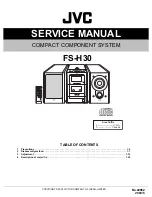
EN
26
●
Do not use the planer if the battery is
damaged.
●
Keep your hands away from the cutting
head. Do not reach into the area between
the planer and the workpiece. Do not rest
your hands near the planer. Risk of injury
upon contact with the blade.
●
Use only sharp blades.
●
Do not soak the materials or the area to be
worked with liquids containing solvents.
●
Avoid all contact with rotating parts.
●
Never use the planer for other purposes and
only with the original parts/accessories.
●
Always keep the planer clean, dry, free from
oil and grease.
Special safety instructions for battery-
operated tools
a)
Ensure that the tool is switched off before
inserting the battery.
Inserting a battery
into a tool that is switched on may result in
accidents.
b) Recharge the batteries indoors only
because the battery charger is designed
for indoor use only.
Risk of electric shock.
c)
To reduce the electric shock hazard,
unplug the battery charger from the mains
before cleaning the charger.
d)
Do not subject the battery to strong
sunlight over long periods and do not leave
it on a heater.
Heat damages the battery
and this is risk of explosion.
e)
Allow a hot battery to cool before
charging.
f)
Do not open up the battery and avoid
mechanical damage to the battery. Risk
of short circuit and fumes may be emitted
that irritate the respiratory tract.
Ensure
fresh air and seek medical assistance in the
event of discomfort.
g)
Do not use non-rechargeable battery.
This
could damage the appliance.
h) The recommended ambient temperature
range for the charging system during
charging is from 4ºC to 40 ºC.
i) The recommended ambient temperature
range for tool and battery storage is from
0ºC to 50 ºC.
j) The recommended ambient temperature
range for tool and battery use is from -5ºC
to 50 ºC.
k) Remove the battery from the device before
storage.
l) Electrolyte leaking from the cells can
cause damage to the skin, clothes or
any other items exposed to it. If the
electrolyte contacts the skin or clothes,
wash thoroughly with clean water. If the
electrolyte enters into the eyes, do not
rub the eyes but flush them immediately
with copious amounts of clean water such
as tap water, and immediately consult a
doctor.
m) Do not disassemble or modify the battery,
which can cause short-circuiting between
cells or between the cell and its wiring, and
disables the battery’s safety protection
system. These can lead to electrolyte
leakage, overheating or a cell or battery,
bursting and fire.
n) Avoid casual or inadvertent shorting of
a battery with metallic objects such as:
wire, tools, neckless or hairpins, which
can cause short-circuiting, which cause
excess current flow, electrolyte leakage,
heating of cells or batteries, bursting and
fire.
o) Keep battery away from a fire or heat. The
insulation materials will melt and the gas
release vent and protection system will
be damaged, causing electrolyte leakage,
bursting and possibly fire.
p) Not allow the battery to contact with water
or gets wet, it may short-circuit, overheat,
rust or lose its functions.
q) Do not expose the battery to mechanical
shock, for example, by dropping, throwing
or crushing, causing electrolyte leakage,
cell and battery heating, bursting and fire.
r) Avoid the battery to directly connect
to electric source such as a car lighter
socket, or car battery, which may cause
excess current to flow at high voltage and
can cause electrolyte leakage, overheating
of a cell or battery, bursting and fire.
















































